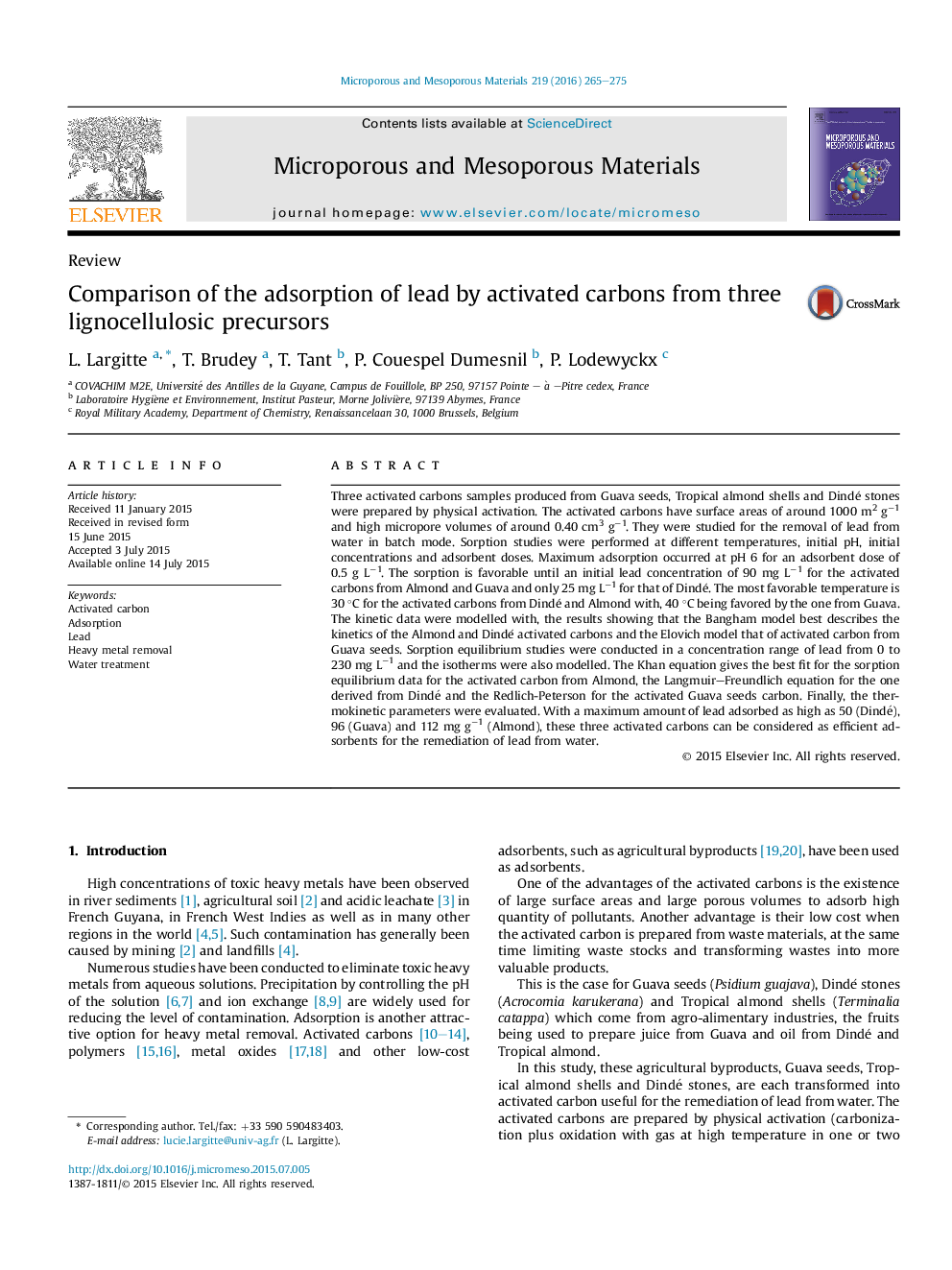| کد مقاله | کد نشریه | سال انتشار | مقاله انگلیسی | نسخه تمام متن |
|---|---|---|---|---|
| 72410 | 49019 | 2016 | 11 صفحه PDF | دانلود رایگان |
• Different activated carbons samples are prepared and tested for heavy metal removal.
• Sorption kinetics and equilibrium are studied and modelled.
• The influence of temperature, concentration, pH and adsorbent dose is studied.
• A sorption mechanism is suggested.
• Thermokinetics parameters ΔH°, Ea are calculated and compared to literature data.
Three activated carbons samples produced from Guava seeds, Tropical almond shells and Dindé stones were prepared by physical activation. The activated carbons have surface areas of around 1000 m2 g−1 and high micropore volumes of around 0.40 cm3 g−1. They were studied for the removal of lead from water in batch mode. Sorption studies were performed at different temperatures, initial pH, initial concentrations and adsorbent doses. Maximum adsorption occurred at pH 6 for an adsorbent dose of 0.5 g L−1. The sorption is favorable until an initial lead concentration of 90 mg L−1 for the activated carbons from Almond and Guava and only 25 mg L−1 for that of Dindé. The most favorable temperature is 30 °C for the activated carbons from Dindé and Almond with, 40 °C being favored by the one from Guava. The kinetic data were modelled with, the results showing that the Bangham model best describes the kinetics of the Almond and Dindé activated carbons and the Elovich model that of activated carbon from Guava seeds. Sorption equilibrium studies were conducted in a concentration range of lead from 0 to 230 mg L−1 and the isotherms were also modelled. The Khan equation gives the best fit for the sorption equilibrium data for the activated carbon from Almond, the Langmuir–Freundlich equation for the one derived from Dindé and the Redlich-Peterson for the activated Guava seeds carbon. Finally, the thermokinetic parameters were evaluated. With a maximum amount of lead adsorbed as high as 50 (Dindé), 96 (Guava) and 112 mg g−1 (Almond), these three activated carbons can be considered as efficient adsorbents for the remediation of lead from water.
PAC A: Physical activated carbon from Tropical almond shells. PAC D: Physical activated carbon from Dindé stones. PAC G: Physical activated carbon from Guava seeds.Figure optionsDownload as PowerPoint slide
Journal: Microporous and Mesoporous Materials - Volume 219, 1 January 2016, Pages 265–275
